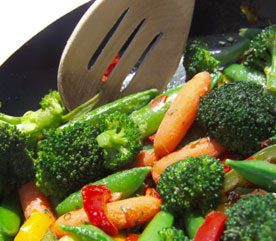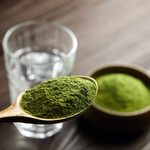The Power of Broccoli
Find out how you can benefit your health with this leafy green veggie. Plus, get a few tips on how to serve it up.

What is Broccoli?
Broccoli is a member of the cabbage (Cruciferae) family, which helps explain its anticancer powers (all cruciferous vegetables are anticancer foods). Almost 90 per cent water, it’s nevertheless loaded with nutrients. One small head of broccoli has as much fibre as a cup of porridge and as much vitamin C as two oranges. And the leaves are edible, too.
Healing Powers
Consider broccoli your number one cancer fighter, thanks to its sulfur compounds, such as sulforaphane, which you can smell when broccoli is overcooked. These compounds signal our genes to boost production of enzymes that detoxify potentially cancer-causing compounds. Eat more broccoli, and you could slash your risk of everything from breast and lung cancer to stomach and colon cancer by as much as half. Sulforaphane has also been found to kill the bacteria that cause ulcers. Broccoli’s also a surprising non-dairy source of calcium and potassium, making it good for your bones as well as your blood pressure. Its vitamin C and beta-carotene protect your eyes from cataracts and safeguard your brain cells from attacks by free radicals that can affect memory.
Health Tip
Steam broccoli (florets and stalks) for 3 to 4 minutes until it’s crisp-tender. Don’t cook it in a lot of water, or the nutrients will leach into the water. Eat the florets, where much of the beta-carotene is stored, but if you like the stalks, eat them, too – they also contain plenty of nutrients.
How much is enough: Half a cup of cooked broccoli is one vegetable serving. Have at least five serves of vegetables every day.
Buying right: Choose florets with a dark green, purple or blue hue; they contain more beta-carotene and vitamin C than light green or yellow ones. Limp stalks or flowering buds are signs of poor quality.



